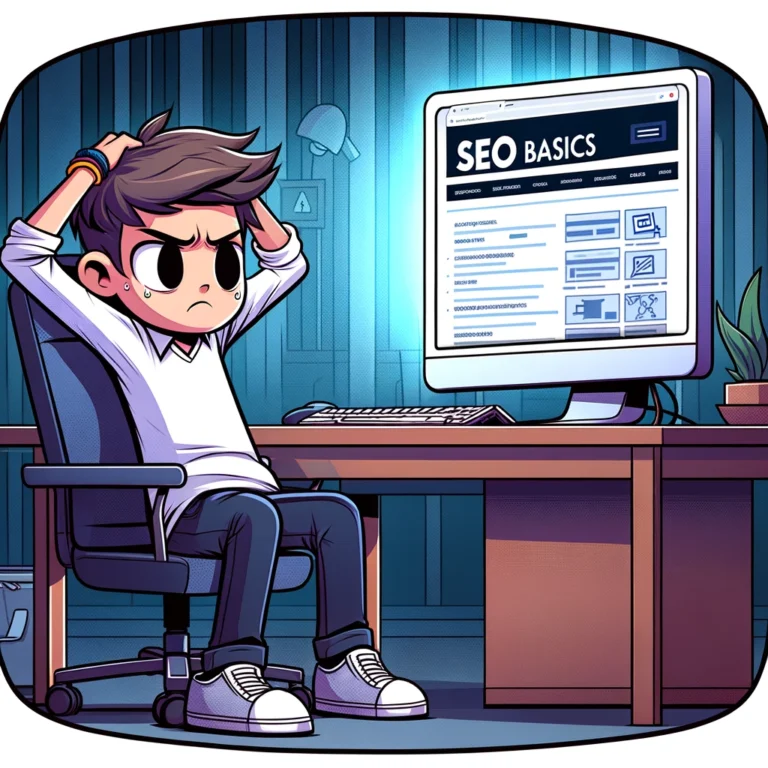In the ever-evolving world of digital marketing, Search Engine Optimization (SEO) remains a cornerstone of success. Whether you’re running a small blog or a large e-commerce platform, understanding how to perform a simple SEO audit is crucial. This guide will walk you through the essential components of SEO, explain their importance, and provide a step-by-step process to audit your website effectively.
Understanding SEO Components
1. Technical SEO
Technical SEO refers to the optimizations that help search engines crawl and index your site more effectively. Key elements include:
- Site Speed: Fast-loading pages improve user experience and are favored by search engines.
- Mobile Responsiveness: With mobile traffic increasing, your site must perform well on all devices.
- SSL Certification: Secure sites with HTTPS are crucial for maintaining user trust and ranking.
- Sitemap and Robots.txt: These files guide search engines on what to crawl and what to ignore.
2. On-Page SEO
On-page SEO involves the content and elements found on your website pages. Important aspects include:
- Keyword Optimization: Using relevant keywords in your content helps search engines understand your pages.
- Content Quality: High-quality, original content is key to engaging users and improving rankings.
- Meta Tags: Title tags and meta descriptions help search engines understand the topic of your content and are also displayed in search results.
- URL Structure: Clear and descriptive URLs are easier for search engines to understand and better for user experience.
3. Off-Page SEO
Off-page SEO refers to actions taken outside of your website that impact your rankings. This primarily involves:
- Backlinks: Links from other websites to yours are a vote of confidence in the eyes of search engines.
- Social Signals: While not a direct ranking factor, social media activity can increase your content’s reach and link potential.
- Local SEO: For businesses with a physical location, local SEO is critical for appearing in local search results.
How to Conduct a Simple SEO Audit
Step 1: Evaluate Technical SEO
- Check Site Speed: Use tools like Google’s PageSpeed Insights to analyze the speed of your site and follow the recommendations for improvements.
- Test Mobile Responsiveness: Google’s Mobile-Friendly Test can help you see if your site is well-optimized for mobile devices.
- Verify SSL Certification: Ensure your site is using HTTPS by checking the URL bar for a security padlock.
- Review Sitemap and Robots.txt: Confirm that these files are correctly formatted and accessible by visiting yoursite.com/sitemap.xml and yoursite.com/robots.txt.
Step 2: Analyze On-Page SEO
- Keyword Analysis: Ensure that your content includes relevant keywords without overstuffing. Tools like SEMrush or Google Keyword Planner can provide insights.
- Content Review: Audit your content for quality and relevance. Look for opportunities to update or improve older posts.
- Meta Tag Assessment: Each page should have a unique title tag and meta description that accurately reflects the content.
- URL Structure Check: Ensure that your URLs are short, descriptive, and include keywords if possible.
Step 3: Assess Off-Page SEO
- Backlink Profile: Tools like Ahrefs or Moz can show you the number and quality of backlinks to your site. Aim to remove bad links and increase good ones.
- Social Media Presence: Evaluate your social media activity and its impact on your SEO.
- Local SEO Check: For local businesses, ensure your Google My Business profile is complete and accurate.
Conducting a simple SEO audit does not require expert knowledge but demands attention to detail and an understanding of SEO fundamentals. By regularly auditing your website, you can identify and address issues that may be hindering your performance in search results. Start with this basic audit, and as you grow more confident, you can delve deeper into more complex SEO strategies.
This approach to SEO is not only practical but also essential in maintaining an effective online presence. Regular audits ensure your site adapts to the ever-changing algorithms and user behaviors, keeping you ahead of the curve.

Deepening Your SEO Audit: Advanced Tips and Common Mistakes to Avoid
While the basic SEO audit outlined above is a great starting point, expanding your understanding and fine-tuning your strategies can lead to even more substantial gains in search engine rankings. Let’s explore some advanced tips and common pitfalls to help refine your SEO practices further.
Advanced SEO Tips
- Structured Data Implementation:
- Use schema markup to help search engines better understand and display your content. This can enhance your appearance in search results with rich snippets, which are especially useful for reviews, events, and recipes.
- Image Optimization:
- Ensure all images on your site are optimized for the web. This includes using descriptive, keyword-rich file names, reducing file sizes for faster loading, and utilizing alt tags to improve accessibility and SEO.
- Internal Linking Structure:
- Strengthen your internal links. This not only helps with SEO but also improves user navigation. Each page should ideally have links to and from other relevant pages on your site, enhancing the overall site structure and authority.
- Content Depth and Quality:
- Move beyond basic content to provide comprehensive resources that cover topics in-depth. This approach, often referred to as “cornerstone content,” can significantly boost your authority and rankings.
- Voice Search Optimization:
- Optimize for voice search by including conversational phrases and questions in your content. As voice search grows, this can become a crucial part of your SEO strategy.
Common SEO Mistakes to Avoid
- Ignoring User Experience (UX):
- SEO isn’t just about keywords and backlinks; user experience plays a significant role. Sites that are difficult to navigate, have slow load times, or feature intrusive ads can be penalized by search engines.
- Duplicate Content:
- Having the same or very similar content on multiple pages of your site can confuse search engines and dilute your rankings. Use canonical tags to indicate the preferred version of a page.
- Over-Optimization:
- Stuffing content with too many keywords or acquiring links unnaturally can lead to penalties. Focus on creating natural, user-friendly content.
- Neglecting Analytics:
- Failing to regularly check analytics is a missed opportunity for optimization. Use tools like Google Analytics to track your site’s performance and understand user behavior.
- Outdated Content:
- Regularly update your content to ensure it remains relevant and authoritative. Outdated content can decrease user engagement and harm your SEO.
Regular Audit Scheduling
Implementing a regular schedule for your SEO audits is vital. For most websites, a comprehensive SEO audit every six months, with smaller monthly checks, is advisable. This routine helps you stay ahead of any potential SEO issues and keeps your site aligned with the latest search engine algorithms and best practices.
Leveraging SEO Audit Tools
To streamline your SEO audit process, consider using various tools that can automate parts of the audit:
- Google Search Console: Provides insights into how Google views your site and where improvements can be made.
- Yoast SEO: A popular WordPress plugin that helps you optimize your content and technical SEO.
- Screaming Frog SEO Spider: A tool that crawls your website, similar to how a search engine would, to find and fix SEO issues.
Wrapping Up
A simple SEO audit is an excellent first step towards understanding and improving your website’s search engine performance. By regularly reviewing and adjusting your SEO strategy, you can ensure that your site not only meets but exceeds the standards required to thrive in competitive search environments. Remember, SEO is a continuous process of testing, analyzing, and refining — the more you invest in it, the greater the returns will be.
With this comprehensive understanding, even those new to SEO can begin to see their websites in a new light, optimizing for both search engines and users to achieve the best possible outcomes.



